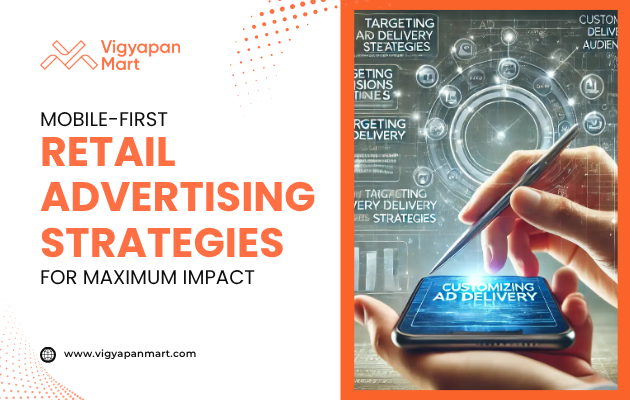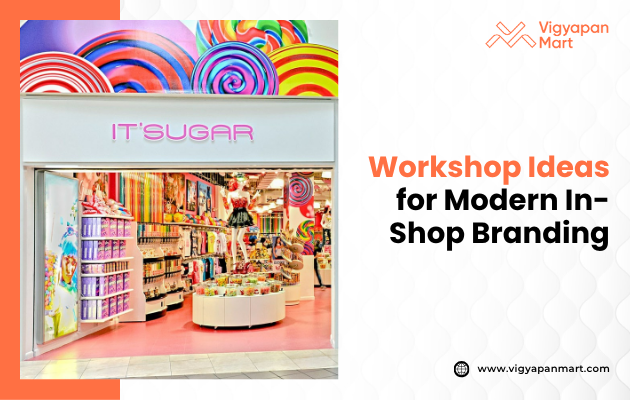Mobile-First Retail Advertising Strategies for Maximum Impact

In today’s world, more people use their phones to shop and browse than ever before. For retail businesses, this means one thing: you need a mobile-first strategy to reach and impress your customers. Mobile-first means you design everything, your website, ads, and content to look and work best on phones and tablets before anything else.
Let’s explore why this matters and how you can use mobile-first retail advertising strategies for the biggest impact.
Why Mobile-First Advertising Matters?
- Most people use mobile devices: Over 60% of global web traffic now comes from mobile devices.
- Google loves mobile-friendly sites: Google uses mobile versions of websites to decide search rankings.
- Slow sites lose customers: If your site is slow or hard to use on mobile, people will leave quickly.
- Mobile users spend more: People who browse on their phones are more likely to buy if the experience is smooth.
Top Mobile-First Retail Advertising Strategies:
Here are the top strategies to make your retail advertising work best on mobile.
1. Optimize Your Website for Mobile
- Fast loading speed: Make sure your site loads quickly on mobile.
- Easy navigation: Buttons and menus should be big and easy to tap.
- Mobile-friendly design: Use large text, clear images, and simple layouts.
- Google’s mobile-first indexing: Google checks your mobile site first for rankings, so make it great.
2. Use Short-Form Video and Interactive Ads
- Short videos grab attention: Videos under a minute are popular and easy to watch on mobile.
- Interactive ads: Let users swipe, tap, or play with ads for more fun and engagement.
- Vertical videos: Design videos to fit the phone screen, not sideways.
3. Leverage AI and Automation
- AI-powered chatbots: Use chatbots to answer customer questions instantly.
- Personalized recommendations: AI can suggest products based on what users like.
- Automated ads: Set up ads that change based on user behavior and interests.
4. Focus on User-Generated Content (UGC) and Authenticity
- Share real customer photos and reviews: People trust content from other shoppers more than ads from brands.
- Build trust: UGC makes your brand feel real and relatable, especially for younger shoppers.
- Encourage reviews: Ask happy customers to post about their experience on social media.
5. Use Location-Based and Proximity Marketing
- Location-based ads: Show ads to people when they are near your store for instant deals.
- Proximity marketing: Use Bluetooth beacons to send special offers to phones inside or near your store.
- Higher engagement: Location-based ads can have 30% higher engagement rates.
How to Create Engaging Mobile Ads?
- Design for small screens: Use big buttons, clear images, and short text.
- Tell a story: Make your ad feel personal and interesting.
- Use strong visuals: Bright colors and real-life images work best.
- Add interactive elements: Let users swipe, tap, or answer questions in your ad.
Privacy and Trust in Mobile Advertising
People care about their privacy. New rules make it important to be clear about how you use customer data.
- Ask for consent: Always ask users before collecting their data.
- Be transparent: Tell people what data you collect and why.
- Build trust: When people trust your brand, they are more likely to buy from you.
Best Practices for Mobile-First Retail Advertising:
Here are some simple best practices to follow for maximum impact:
- Make your website mobile-friendly: Test it on different phones and tablets.
- Use short, catchy videos: Keep your message clear and quick.
- Personalize your ads: Show products that match what users like.
- Encourage user-generated content: Let customers share their stories.
- Leverage location-based marketing: Reach people when they are nearby.
- Respect privacy: Always ask for permission and be honest about data use.
Facts and Figures: Why Mobile-First Works
- Mobile traffic: Over 60% of global web traffic is from mobile devices.
- Location-based ad spending: Expected to reach $225.96 billion by 2028.
- Engagement rates: Location-driven ads can have 30% higher engagement.
- Customer trust: 72% of consumers are more likely to act on ads tailored to their location.
- Slow sites lose sales: Slow-loading mobile pages lead to high bounce rates and lost sales.
Conclusion
Mobile-first retail advertising is not just a trend, it is the new standard. By optimizing your website, using short videos and interactive ads, leveraging AI, focusing on user-generated content, and using location-based marketing, you can reach more customers and make more sales. Always remember to respect privacy and build trust with your audience. With these strategies, your retail business will be ready for the future and stand out even in the saturated market. Want to launch a successful retail advertising campaign for your business? Connect with Vigyapan Mart experts today.









